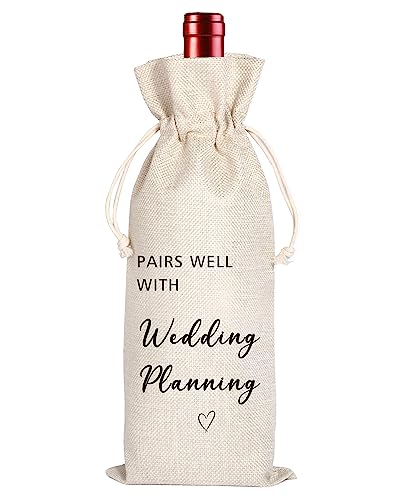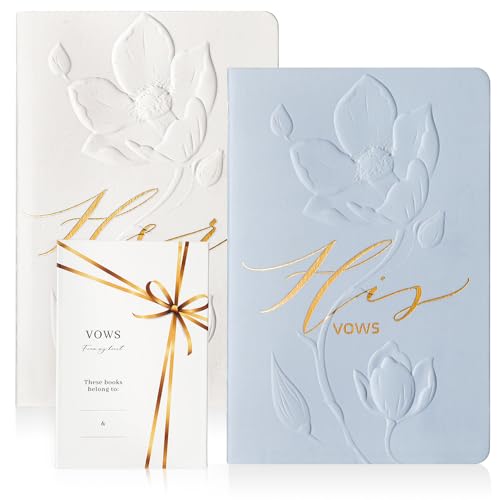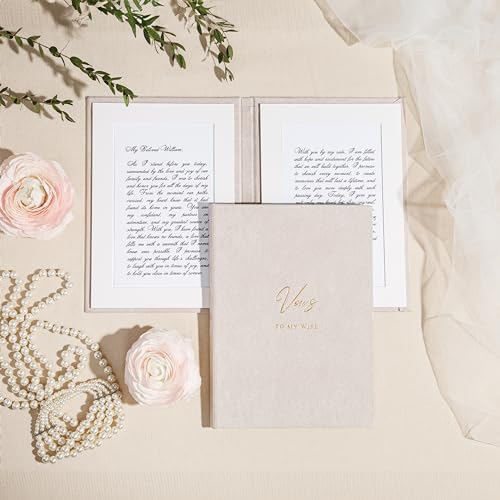Your wedding ceremony represents the heart of your celebration—those precious minutes when you exchange vows, share your commitments, and officially begin your married journey together. While receptions often receive the majority of planning attention, the ceremony itself deserves thoughtful consideration as the emotional centerpiece of your day.
From traditional religious services to completely personalized experiences, your ceremony offers the opportunity to express your relationship’s unique story while creating a meaningful experience for both you and your guests. By carefully crafting each element to reflect your values, personalities, and vision, you transform a standard service into an unforgettable moment that perfectly captures the essence of your love.
Let’s explore everything you need to know to create a wedding ceremony that perfectly expresses your relationship while creating a meaningful experience for everyone present!
Ceremony Style & Location Strategy
Choose a ceremony approach that authentically reflects your relationship.
Finding Your Authentic Ceremony Style
Determine the approach that feels right for your relationship:
- Traditional Religious: Following established faith practices and rituals
- Spiritual But Not Religious: Incorporating meaningful spiritual elements
- Civil Ceremony Focus: Emphasizing the legal and commitment aspects
- Completely Custom Creation: Building a ceremony from scratch
- Cultural Heritage Celebration: Honoring important family traditions
- Interfaith Adaptation: Thoughtfully blending different religious backgrounds
- Elopement or Intimate Approach: Creating meaning with minimal guests
“We spent a lot of time thinking about what kind of ceremony would truly represent us,” shares Amara, who married last spring. “Neither of us are particularly religious, but we wanted something more meaningful than a basic civil ceremony. We ended up creating what we called a ‘gratitude ceremony,’ where we incorporated elements that honored the people and experiences that brought us together. It felt completely authentic to our relationship while still having the gravitas a wedding deserves.”
Ceremony Location Considerations
Select a setting that enhances your ceremony experience:
- Indoor vs. Outdoor Decision: Weather, season, and comfort factors
- Religious Building Requirements: Understanding space restrictions and rules
- Natural Setting Opportunities: Gardens, beaches, forests, mountains
- Architectural Significance: Historic or meaningful buildings
- Personal Connection Locations: Family properties, meeting places, meaningful spots
- Practical Considerations: Accessibility, acoustics, seating capacity
- Backup Planning: Weather contingencies for outdoor ceremonies
Atmosphere Creation
Set the emotional tone for your ceremony:
- Formality Level Decision: From extremely traditional to relaxed and casual
- Music Selection Strategy: Setting the emotional foundation
- Decoration Focus: Creating visual impact and meaning
- Seating Arrangement Psychology: Creating intimacy or grandeur
- Guest Participation Planning: Passive observation vs. active involvement
- Sensory Experience Design: Incorporating meaningful scents, sounds, visuals
- Energy Management: Creating appropriate emotional progression
“The biggest surprise in our planning process was realizing how much the ceremony seating arrangement would affect the whole experience,” explains Jordan, a recent bride. “When we switched from traditional straight rows to a curved seating arrangement that partially surrounded us, the entire feeling changed. Suddenly it felt like our community was truly holding space for our vows rather than just watching us. That small change created exactly the intimate, connected feeling we wanted for this important moment.”
Ceremony Elements & Traditions
Create a meaningful structure for your wedding service.
Essential Ceremony Structure
Build a framework that supports your vision:
- Processional Planning: Who enters, in what order, to what music
- Welcome & Introduction: Setting tone and context for guests
- Readings & Spoken Elements: Meaningful texts and presentations
- Personal Vow Considerations: Written by couple or traditional options
- Unity Ritual Options: Symbolic actions representing your union
- Ring Exchange Approach: Traditional or personalized wording
- Pronouncement & Presentation: Official declaration of marriage
- Recessional Organization: Exiting strategy and music
“Our officiant gave us the best advice,” shares Sophia, married for two years. “She suggested we think of our ceremony as having an emotional arc—starting with the excitement of the processional, moving through meaningful reflection during readings, building to the emotional peak of our vows, and ending with joyful celebration during the recessional. This framework helped us select elements that created a natural flow rather than feeling like disconnected parts.”
Personalization Opportunities
Make standard elements uniquely yours:
- Processional Variations: Non-traditional walking arrangements
- Meaningful Music Selection: Songs that tell your story
- Personal Reading Sources: Beyond typical religious or poetic texts
- Memory Incorporation: Honoring important relationship moments
- Custom Unity Ceremonies: Creating new traditions specific to your story
- Vow Personalization: Writing promises specific to your relationship
- Community Involvement: Ways to include important people beyond the wedding party
- Cultural Element Integration: Honoring heritage and background
Unity Ceremony Options
Symbolic rituals that represent your union:
- Candle Lighting Variations: Different approaches to this classic symbol
- Sand Ceremony Adaptations: Visual representation of lives joining
- Handfasting Traditions: Ancient ritual with modern interpretations
- Tree or Plant Rituals: Living symbols of growing relationship
- Wine or Beverage Sharing: Communion-inspired unity moments
- Physical Object Creation: Crafting or building something together
- Letter or Message Exchange: Private words saved for future reading
- Custom Ritual Creation: Inventing traditions meaningful to your story
“We created what we called a ‘foundation stone ceremony’ for our wedding,” explains Elena. “Each of our closest family members brought a small stone from a place meaningful to our upbringing. During the ceremony, they placed these stones in a beautiful container while sharing a brief memory or wish for us. We used these stones to build the first step in the garden of our new home—a daily reminder of the foundation of love and support beneath our marriage. It became the most meaningful moment in our entire wedding.”
Officiant Selection & Collaboration
Partnership with the right ceremony leader makes all the difference.
Finding Your Perfect Officiant Match
Select the right person to lead your ceremony:
- Religious Leader Considerations: Working within faith traditions
- Professional Celebrant Advantages: Ceremony creation expertise
- Friend/Family Officiant Options: Personal connection benefits
- Legal Authorization Requirements: Ensuring proper certification
- Personality and Energy Alignment: Finding your stylistic match
- Experience Level Assessment: Balancing expertise with personal connection
- Collaboration Style Compatibility: Finding someone receptive to your vision
“Our officiant selection process taught us so much about what we actually wanted from our ceremony,” shares Maya, who married in an interfaith service. “We initially assumed we needed separate religious leaders to honor both our traditions, but after several uncomfortable meetings, we found an experienced professional celebrant who helped us authentically incorporate elements from both backgrounds while maintaining a cohesive ceremony. Her experience with interfaith couples saved us from a ceremony that would have felt disconnected and instead created something truly beautiful.”
Effective Officiant Collaboration
Develop a strong working relationship:
- Vision Communication Tools: Clearly expressing your ceremony goals
- Balanced Input Process: Respecting expertise while maintaining your vision
- Script Development Timeline: Creating and reviewing ceremony content
- Rehearsal Leadership Expectations: Clarifying roles and responsibilities
- Day-of Logistics Coordination: Ensuring smooth execution
- Public Speaking Skills Assessment: Supporting less experienced officiants
- Personal Story Sharing Boundaries: Determining appropriate content
“The worksheet our officiant provided was transformative for our planning process,” explains Taylor. “It asked us not just about what elements we wanted to include, but deeper questions about what feelings we hoped our guests would experience, what parts of our relationship story were most important to share, and what marriage meant to each of us. These reflections completely changed our approach, shifting our focus from surface-level decoration choices to the emotional experience we wanted to create.”
Ceremony Script Development
Create the content that will become your ceremony:
- Tone and Language Decisions: Formal, conversational, poetic choices
- Personal Story Integration: Appropriate sharing of your journey
- Audience Consideration: Engaging guests in meaningful ways
- Length Optimization: Creating depth without excessive duration
- Flow and Transition Planning: Moving smoothly between elements
- Humor and Seriousness Balance: Finding your appropriate mix
- Cultural and Family Sensitivity: Navigating complex dynamics
Meaningful Readings & Music
Select words and sounds that enhance your ceremony’s significance.
Finding Meaningful Readings
Discover words that resonate with your relationship:
- Traditional Religious Texts: Sacred passages with personal meaning
- Literary Selection Strategy: Prose and poetry that speaks to you
- Non-Traditional Source Options: Song lyrics, children’s books, personal letters
- Original Composition Possibilities: Custom-written readings
- Length and Complexity Considerations: Appropriate scope for your ceremony
- Delivery Person Selection: Choosing the right voice for each reading
- Theme Alignment Importance: Connecting readings to your overall message
“We knew we wanted readings that felt meaningful rather than just traditional,” shares Olivia, who recently celebrated her wedding. “After months of searching typical wedding readings and feeling uninspired, we realized our favorite podcast had perfectly expressed our view of marriage in a recent episode. We transcribed that segment, contacted the hosts for permission, and it became the most commented-on part of our ceremony. Looking beyond typical sources helped us find something that truly reflected our values.”
Ceremony Music Strategy
Create a soundtrack that enhances emotional moments:
- Live vs. Recorded Decision: Budget and logistical considerations
- Musician Selection Process: Finding the right performers
- Song Choice Significance: Selecting pieces with personal meaning
- Traditional vs. Contemporary Balance: Finding your musical style
- Transition Moment Planning: Using music to guide emotional shifts
- Cultural Music Integration: Honoring heritage through sound
- Volume and Acoustics Management: Ensuring perfect sound experience
“Music created the emotional foundation for our entire ceremony,” explains Rafael. “We carefully selected pieces that represented different phases of our relationship—the processional music was from our first date at a concert, the interlude piece was a song that helped us through a difficult time apart, and our recessional was the upbeat song that always gets us dancing together at parties. These choices made the ceremony feel like a musical journey through our relationship, adding depth that our guests could feel even without knowing the specific significance.”
Creative Alternative Options
Think beyond traditional readings and music:
- Collaborative Guest Readings: Multiple voices sharing one reading
- Musical Performance as Reading: Songs performed as spoken word
- Interactive Reading Moments: Call and response with guests
- Multimedia Integration: Audio or video elements in ceremony
- Moment of Silence Inclusion: Contemplative space between words
- Dance or Movement Elements: Physical expression instead of words
- Sound Bath or Instrumental Meditation: Creating emotional atmosphere
Vow Creation & Exchange
Craft promises that form the heart of your commitment.
Traditional vs. Personal Vows
Choose the right approach for your promises:
- Standard Religious Vow Consideration: Working within faith traditions
- Traditional Secular Options: Time-honored promise formulations
- Completely Custom Creation: Writing entirely original promises
- Hybrid Approach Possibilities: Combining traditional and personal elements
- Partner Consistency Decision: Same format or individualized approach
- Length and Tone Alignment: Creating complementary styles
- Private vs. Public Considerations: Alternative options for sharing
“We struggled with the decision between traditional and personal vows,” shares Aisha. “The formal language of traditional vows felt significant and grounding, but we also wanted to express specific promises unique to our relationship. Our compromise was perfect—we exchanged traditional vows during the ceremony for the gravitas and shared experience with our guests, then wrote personal promises that we exchanged privately during our first look moment before the ceremony. This gave us both the public tradition and intimate personal expression.”
Personal Vow Development
Create meaningful, authentic promises:
- Reflection Exercise Preparation: Questions to guide your writing
- Structure and Framework Options: Organizing your thoughts coherently
- Theme Identification Process: Finding your core message
- Appropriate Length Determination: Creating meaningful but concise content
- Tone Consideration: Serious, humorous, poetic, straightforward
- Practice and Refinement System: Editing for impact
- Delivery Method Decision: Memorized, read, repeated after officiant
“The best advice I received about writing personal vows came from my sister,” explains Sofia. “She suggested I think of them in three parts—acknowledging the past (how we met, what I’ve learned from our journey), affirming the present (what I love about my partner now), and promising the future (specific commitments I was making). This simple framework made the writing process so much more manageable and created vows that told our complete story.”
Vow Logistical Planning
Ensure perfect delivery of your promises:
- Physical Format Decision: Cards, books, electronic devices
- Backup Copy Importance: Emergency preparation
- Microphone Considerations: Ensuring guests can hear
- Emotional Preparation Strategy: Managing powerful feelings
- Matching Presentation Style: Creating visual coordination
- Photography Moment Planning: Capturing this significant exchange
- Vow Preservation Methods: Ways to remember and revisit your promises
Ceremony Enhancement Elements
Additional touches that create memorable moments.
Guest Participation Opportunities
Involve your community in meaningful ways:
- Group Vow of Support: Collective promises from attendees
- Blessing or Well-Wishing Rituals: Shared positive intentions
- Physical Item Contribution: Adding to a collective gift or display
- Responsive Reading Involvement: Call and response moments
- Song or Sound Participation: Group musical expression
- Meaningful Object Passing: Items circulated among guests
- Silent Intention Setting: Guided meditation or reflection moment
“Our ring warming ceremony created this beautiful moment of community,” shares Jordan. “Before the formal ceremony began, our rings were passed through the audience in a small fabric pouch. Each guest held them briefly, infusing them with their good wishes and intentions for our marriage. By the time they reached us for our vow exchange, they carried the loving energy of everyone present. Guests told us afterward how meaningful it felt to have a tangible way to contribute to our ceremony beyond just watching.”
Ceremony Programs
Guide your guests through the experience:
- Information Inclusion Decisions: What context to provide
- Design Alignment with Wedding Style: Visual consistency
- Practical Details Integration: Timing, expectations, instructions
- Explanation of Traditions: Helping guests understand significance
- Wedding Party Introduction: Honoring important relationships
- Gratitude Expression: Acknowledging support and presence
- Keepsake Potential: Creating a meaningful memento
“Our ceremony program became one of my favorite wedding elements,” explains Priya. “Rather than just listing the order of events, we created what we called a ‘relationship field guide.’ It included a timeline of our journey together, explanations of the cultural traditions we were incorporating, and the stories behind our musical choices and readings. Guests told us it transformed their experience from simply observing to truly understanding the significance of each moment.”
Symbolic Object Integration
Incorporate meaningful items into your ceremony:
- Family Heirloom Inclusion: Connecting to past generations
- Travel or Adventure Mementos: Representing shared experiences
- Future-Focused Objects: Items that symbolize dreams and goals
- Natural Element Integration: Flowers, stones, water, fire symbols
- Spiritual or Religious Items: Meaningful faith-based objects
- Handcrafted Element Inclusion: Personally created ceremony items
- Surprise Gift Exchange: Unplanned meaningful presents
Ceremony Practical Planning
Ensure flawless execution of your vision.
Ceremony Rehearsal Strategy
Practice for confidence and flow:
- Timing Optimization: When to schedule for maximum attendance
- Location Requirements: Same venue vs. alternative practice space
- Essential Elements to Practice: What deserves focus
- Clear Communication Approach: Efficiently directing participants
- Processional and Positioning Practice: Movement and placement
- Technical Element Testing: Sound, music, special features
- Question Resolution Opportunity: Clarifying uncertainties
“As someone who’s been in many weddings, I was determined to run an efficient rehearsal for my own ceremony,” shares Taylor. “We created a clear diagram of everyone’s positions, sent a detailed email outlining exactly what we’d practice, and kept the actual rehearsal focused only on movement and transitions—saving detailed explanation of the ceremony meaning for other times. The whole thing took just 30 minutes, which our wedding party greatly appreciated, especially those who had traveled far or had young children with them.”
Timing and Flow Management
Create perfect ceremony pacing:
- Ideal Duration Determination: Finding your appropriate length
- Transition Moment Planning: Smooth movement between elements
- Buffer Time Integration: Allowing for unexpected moments
- Entrance Coordination Strategy: Managing many moving pieces
- Starting Time Decision: Accounting for latecomers
- Photography Timing Consideration: Allowing for crucial shots
- Weather Impact Awareness: Adjusting for extreme conditions
“The timing exercise our planner had us complete was incredibly helpful,” explains Maya. “She had us break down our ceremony into individual elements and estimate duration for each—processional (5 minutes), welcome (3 minutes), readings (4 minutes), and so on. This made us realize our original plan would have stretched well over an hour, which felt too long for our outdoor summer ceremony. We made thoughtful adjustments to create a 30-minute ceremony that still included all our must-have elements without rushing through the most important moments.”
Comfort and Accessibility Planning
Ensure all guests can fully participate:
- Seating Adequacy Assessment: Providing appropriate capacity
- Weather Protection Strategy: Sun, wind, temperature considerations
- Sound Amplification Needs: Ensuring all can hear clearly
- Visibility Planning: Arrangement for clear sightlines
- Mobility Accommodation: Access for all physical abilities
- Duration Appropriateness: Comfort for standing or sitting
- Special Needs Consideration: Individual accommodation planning
Different Ceremony Types & Approaches
Find the perfect style for your relationship.
Religious Ceremony Considerations
Honor faith traditions meaningfully:
- Requirement Understanding: Rules and expectations clarity
- Officiant Selection Process: Finding the right religious leader
- Customization Boundaries: What can be personalized
- Pre-Ceremony Requirements: Classes or counseling expectations
- Family Expectation Management: Navigating traditional expectations
- Meaningful Participation Planning: Involving non-religious partners/guests
- Modern Adaptation Possibilities: Updating traditions respectfully
“Navigating our traditional Catholic ceremony while honoring my wife’s Jewish family required thoughtful planning,” shares Elena. “We worked closely with our priest to find moments where we could incorporate Jewish traditions without conflicting with the Catholic liturgy. We added a beautiful chuppah that complemented the church architecture, included a modified breaking of the glass, and our programs explained the significance of both traditions. Rather than feeling like a compromise, the ceremony beautifully represented our commitment to honoring both our backgrounds as we built our future together.”
Completely Custom Ceremonies
Build a ceremony from the ground up:
- Foundation Elements Decision: Essential components to include
- Unique Ritual Creation: Inventing your own symbolic moments
- Thematic Development: Creating a cohesive ceremonial experience
- Script Creation Process: Building your ceremony content
- Non-Traditional Officiant Options: Finding the right ceremony leader
- Flow and Structure Planning: Creating a cohesive experience
- Legal Requirement Integration: Ensuring marriage validity
“Creating our ceremony completely from scratch felt overwhelming at first,” explains Rafael. “The breakthrough came when we identified our three core values as a couple—adventure, creativity, and community—and used those as guiding principles. Every element we considered had to reflect at least one of these values. This framework gave us freedom to be completely original while still creating a ceremony that felt cohesive and authentically us.”
Unity Ceremony Variations
Symbolize your union in meaningful ways:
- Traditional Candle Ceremony: Classic flame-sharing symbolism
- Sand Blending Rituals: Visual representation of lives joining
- Handfasting Traditions: Ancient binding ceremony adaptations
- Tree or Plant Rituals: Living symbols of growing relationship
- Wine or Beverage Sharing: Communion-inspired unity moments
- Physical Object Creation: Crafting or building something together
- Family-Inclusive Options: Involving children or parents
- Culturally-Significant Adaptations: Heritage-honoring unity moments
Ceremony for Different Relationship Types
Adapt ceremony approaches for your specific situation.
Second Marriage Considerations
Honor your journey with meaningful celebration:
- Previous Experience Acknowledgment: Addressing past relationships respectfully
- Renewal vs. New Beginning Balance: Finding your appropriate framing
- Children and Family Integration: Including existing family members
- Guest List Sensitivity: Navigating complex relationship histories
- Registry and Gift Expectations: Communicating appropriate wishes
- Ceremonial Tone Setting: Creating the right atmosphere
- Meaningful Differentiation: Making this ceremony unique
“For our second marriage ceremony, we wanted to acknowledge our life experience while celebrating our new beginning,” shares Sophia. “We created what we called a ‘wisdom exchange’ where we each shared three lessons from our life journeys that we were bringing into our new marriage. This honest acknowledgment of our past created this beautiful foundation of authenticity and intentionality for our relationship. Rather than pretending we were starting from zero, we honored how our full life stories were coming together to create something new.”
Family-Focused Ceremonies
Celebrate blended family creation:
- Child Participation Planning: Age-appropriate involvement
- Family Unity Ceremonies: Symbolic joining beyond the couple
- Vow Inclusion for Children: Promise extensions to family members
- Role Acknowledgment: Honoring new family positions
- Previous Relationship Respect: Appropriate boundaries
- Multi-Generation Integration: Including extended family meaningfully
- Future Family Vision: Celebrating new beginnings together
“The most meaningful part of our ceremony was definitely our family medallion ritual,” explains Jordan. “After our vow exchange as a couple, my new husband and I presented each of his three children with a medallion symbolizing our new family bond. We had special promises we made to each child based on their age and personality. There wasn’t a dry eye when our 7-year-old spontaneously decided to make promises back to us. That unplanned moment perfectly captured what our wedding was truly about—not just two people committing to each other, but five people creating a new family together.”
Same-Sex Ceremony Considerations
Create authentically representative celebrations:
- Traditional Adaptation Decisions: Which elements to include or reinvent
- Gender-Specific Tradition Navigation: Thoughtful modernization
- Family Support Variation Management: Honoring different journeys
- Processional and Positioning Creativity: Beyond gendered traditions
- Language Customization Importance: Using appropriate terminology
- Officiant Selection Significance: Finding affirming ceremony leaders
- Community Celebration Elements: Honoring support systems
“We wanted our ceremony to feel authentic to our relationship while still honoring meaningful traditions,” shares Maya. “We reimagined rather than rejected traditions, walking down the aisle together rather than being ‘given away,’ having a mixed-gender wedding party without designated ‘sides,’ and carefully reviewing every word of our ceremony script to ensure the language reflected our relationship accurately. Our wonderful officiant helped us create something that felt both timeless and completely true to who we are as a couple.”
More Creative Ceremony Inspirations
Looking for more unique ceremony ideas? Here’s a collection of creative concepts to consider!
| Creative Ceremony Ideas | Unique Ritual Concepts | Themed Ceremony Experiences |
|---|---|---|
| Dawn Ceremony | Memory Stone Collection | Literary-Inspired Ceremony |
| Starlight Vow Exchange | Wisdom Circle Sharing | Music Festival Wedding |
| Mountain Summit Ceremony | Legacy Letter Creation | Cultural Heritage Celebration |
| Forest Canopy Exchange | Ancestral Honoring Ritual | Art Creation Ceremony |
| Ocean Tide Ceremony | Love Lock Tradition | Historical Era Ceremony |
| Desert Sunrise Service | Community Ring Warming | Nature Element Celebration |
| Garden Labyrinth Ceremony | Anniversary Box Creation | Adventure-Themed Exchange |
Conclusion: Creating a Ceremony That Truly Represents Your Relationship
Your wedding ceremony offers a rare opportunity to publicly declare your commitment while sharing your unique relationship story with those you love most.
While weddings involve countless decisions from attire to menu selections, your ceremony remains the true heart of your celebration—the moment when you formally transition from two individuals to a married couple. By thoughtfully crafting each element to reflect your authentic relationship, values, and vision, you create not just a meaningful ceremony but a foundation for your marriage journey.
Whether you choose traditional religious elements, completely personalized approaches, or a thoughtful blend of both, the most powerful ceremonies share a common quality: authenticity. When your ceremony genuinely reflects who you are as a couple—your unique history, your shared values, and your vision for the future—it resonates deeply with both you and your guests, creating a truly unforgettable experience.
By approaching your ceremony planning with intention, creativity, and personal meaning, you transform what could be a standard service into a powerful moment of connection and commitment. The result is more than just a beautiful wedding element—it’s a meaningful beginning to your married life together and a memory you’ll treasure throughout your journey ahead.






































